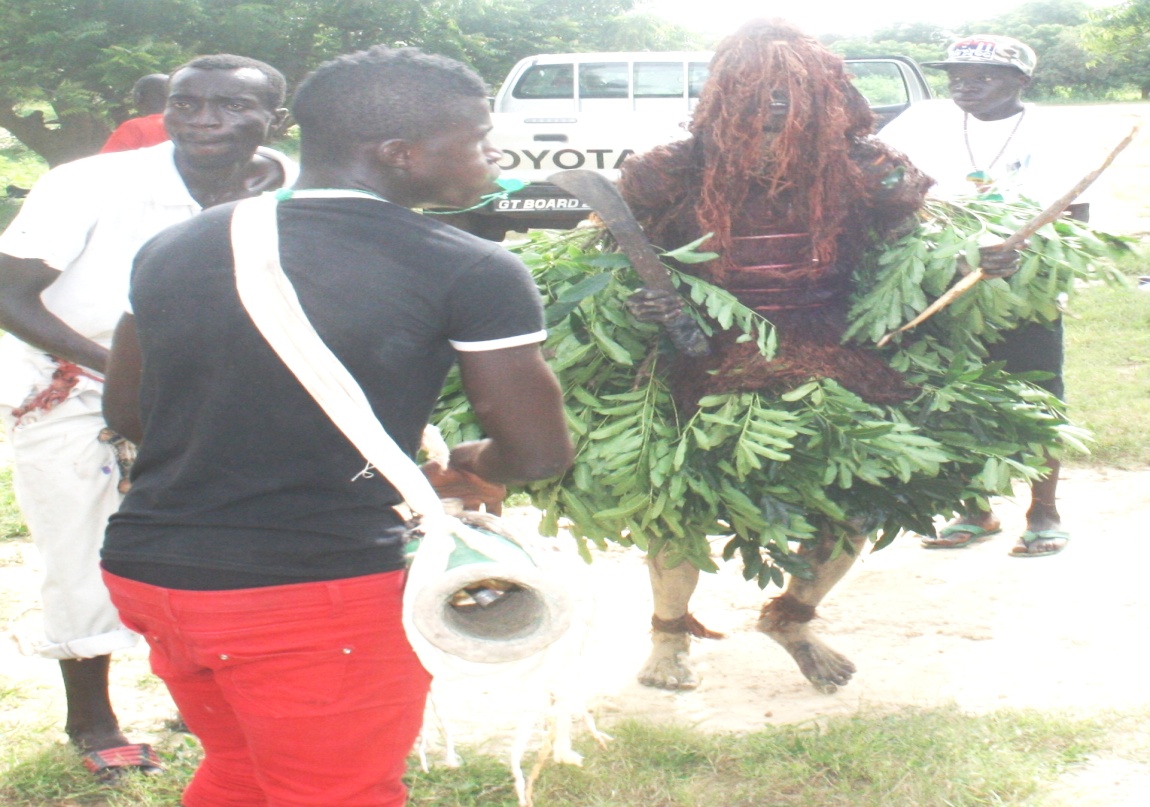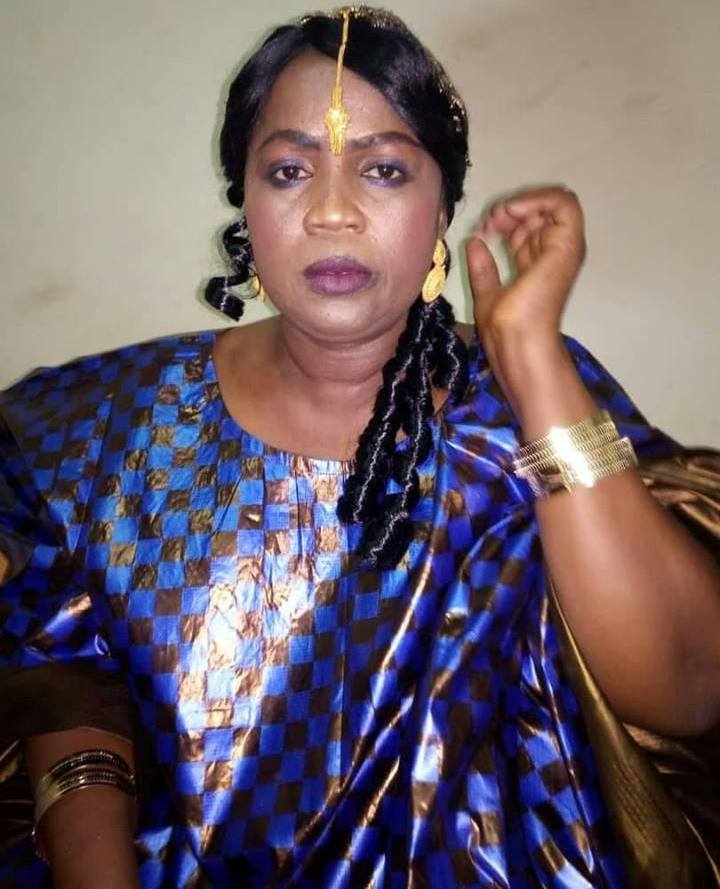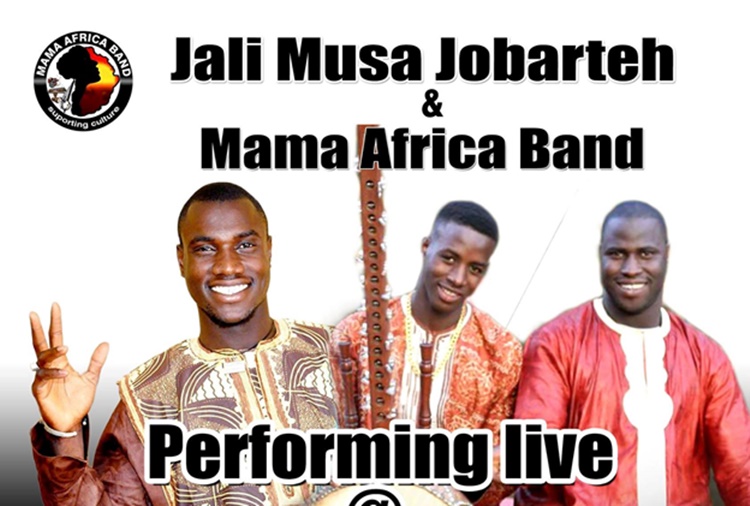By: Yunus S Saliu
Among the celebrated community cultural festivals in destination Gambia, Janjangbureh Kankurang Festival takes the lead taking into consideration the Kankurang masquerade which is the highlight of the festival and as well the host community of the festival, Janjangbureh.
In The Gambia, Kankurang is one of the most important masquerades that perform not just only at the community or individual event but official function as well. It is a well recognized powerful masquerade across the Senegambia which people believe in its spiritual potency. Among the Mandinka, in particular, Kankurang is believed to be a spirit which protects initiates and the community from evil forces and witchcraft during the period of initiation that also serves to enforce discipline in society.
According to Hassoum Ceesay, historian and author, when Mungo Park the famous explorer visited the Gambia in 1795, he wrote that he saw mama jumbo – mamoo a type of Kankurang which was out to dispense justice and drive away evil spirits.
Kankurang, according to oral narratives, originated from Kaabu, the westernmost extension of the Manding Empire of Mali which came to prominence following the demise of Mali and the rise of Songhai to the east.
The outward expansion of Manding traders from Mali brought with it the influences of secret societies and power associations of the Mande people when they settled in the Sene-Gambia region around the 16th and 17th centuries.
The traders are also said to have brought along artisans skilled in various crafts, as well as their griots who were versed in their history and cultural practices such as their masquerade traditions.
Oral sources maintain that the Kankurang masquerade is a modified form of the ancient Malian masks brought in by the Nyamakala, a social group which was renowned for their specialist knowledge as smiths, who also had occult powers which enabled them to communicate with spirits. The Nyamakala wielded great influence in traditional society, presiding over the important ceremony marking the rites of passage from childhood to adulthood.
There are different types of Kankurang as one can identify them with their costumes still they are unique and distinct among other masquerades. In in-depth, ‘generally the Kankurang refers to a family of Mandinka masquerades that are covered from head to mid-calf or head to toe with bark, leaves or a mixture of bark and leaves.
The functions of the Kankurang vary according to type, but generally they are associated with the spirit world – furulung, a male dominated world where women and uncircumcised youths are excluded. The masks or costumes serve to conceal the wearers’ identity and give him superhuman powers.’
There are things forbid Kankurang as it is considered dishonorable to reveal the Kankurang’s identity, or for it to talk in public, engage in physical fight, or accidentally fall on the ground while performing. A breach of these rules would warrant the seizure of an article from the body of such Kankurang as evidence to justify a kadebo – a grand ceremony that serves to impose disciplinary action on its lambewolu, the age-set that accompanies the Kankurang.
The most common type of Kankurang is the Jamba Kankurang. This is dressed in green mahogany leaves with the upper part of the body neatly wrapped in bark – jaffo. The uncovered face, forearms and legs are usually painted with mud.
The Jamba Kankurang has judicial functions in the community, serving to enforce discipline and punishing transgressors. This Kankurang is most common in Janjangbureh, but nowadays can be found throughout the country, serving purely entertainment functions at festive events.
Another type of Kankurang is the Faraakankurang otherwise called Wulengwulengo or referred to as the mythical Ifangbondi. Its costume is the shredded bark of the ‘camel foot tree’ a piece of which the wearer also continuously chews.
It is usually seen during the circumcision period, or at emergences such as food poisoning or a killing in the village. Its main functions are to enforce discipline and drive away evil spirits and witches. When it is out and about, women are not allowed out. This type of Kankurang is more common in Fulladu West District, Central River Region.
Jambajabally is another type of Kankurang which is most common in Jimara and Wuli Districts, Upper River Region, but is also found in Niani District, Central River Region. The word ‘jambajabally’ translates as ‘leaf never dry,’ which implies that the Jambajabally is always out for a short purpose, for example, passing a message to the community or settling a dispute between age-sets.
The Jambajabally is dressed in complete green mahogany leaves and sings with the accompanying women forming the chorus line. The person dressed in this mask is usually an elder who is very experienced in the tradition.
There are many other Mandinka masquerade traditions which are referred to as Kankurang. These include the Wurikankurang, the Mamoo, the Korsay, the Dembaningnyako and Senko. However, according to knowledgeable elderly informants, there are only three (3) original Kankurangs that came from Manding.
These are the Wuleng-wulengo (also called Ifangbondi), Jambajabally and FitaKankurang (also referred to Kunsutung). The others are mere imitations of the original three with the costumes varying from district to district, using materials that are locally available for costumes.
Hassoum further shed more light on Kankurang that is a masquerade associated with the rites of passage or initiation into manhood in Mandinka communities in The Gambia, Senegal and Guinea Bissau. In The Gambia, the tradition is closely associated with the island of Janjangbureh where a special sacred space, Tinyangsita, is dedicated to the practice of the tradition. In 1993 the Kankurang Festival was started in Janjangbureh to safeguard and honor the tradition.
After a hiatus of several years, in 2018, the National Center for Arts and Culture with the support of the Youth Empowerment Project-funded by the EU, and in collaboration with community and other tourism stakeholders initiated the revival of the festival.
The driving motivation is to use the festival and other heritage resources in and around the island as tourism products to empower the youths of the community to take advantage of the opportunities presented by tourism. The intention is to make the festival an annual event and secure for it a permanent place in the National Calendar of Events.
However, this year edition of the Janjangbureh Kankurang Festival scheduled for January 18th-20th will bring together different participants from the neighbouring communities and as far as from Kombo and Greater Banjul Area also with varied masking traditions which will include hunting devil – fairy of the Aku ethnic group, Zimba of the Wollof and the Kumpo of the Jola.
The three-day activities for the festival includes Janjangbureh tour and community-based visit to Jamali; parade of masquerades; musical concert; 10 Kankurangs and 5 additional masquerades Carnival; Kankurang and masquerades’ performance and display at night; community-based tourism tours – Tabanani, Community organized workshops – tie and dye, hair braiding, cooking local food experience, marathon





